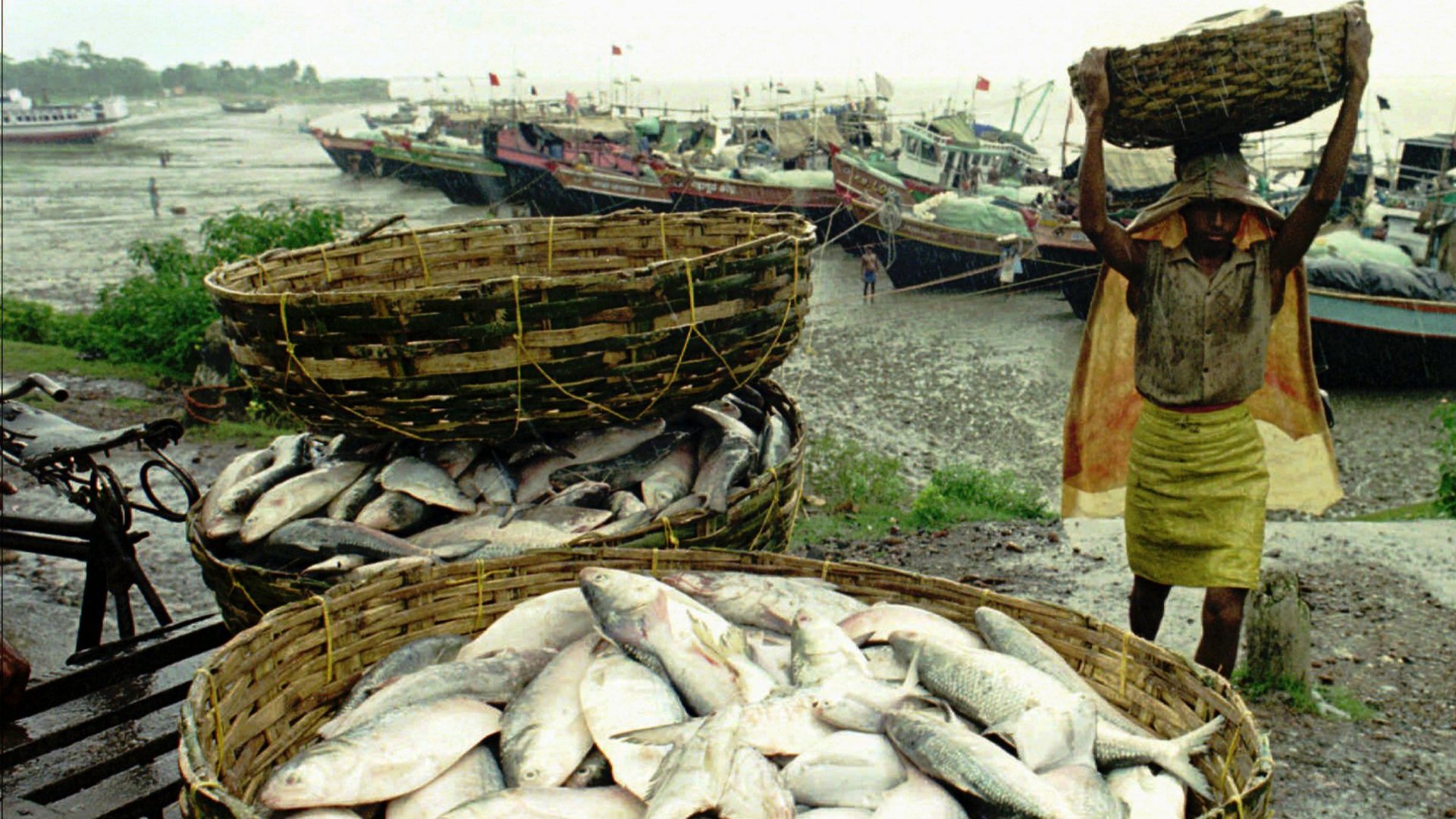A fish scarcity is forcing India, Bangladesh, and Myanmar to pick bones with each other
KOLKATA, India—For much of the world’s 230-million Bengali population, there is fish, and then there is hilsa—a silvery tropical variety that has celebrity status on local plates.


KOLKATA, India—For much of the world’s 230-million Bengali population, there is fish, and then there is hilsa—a silvery tropical variety that has celebrity status on local plates.
The bony delight (known scientifically as Tenualosa ilisha and in Bengali as eleesh) is so popular that in Bangladesh, where it is the “national fish,” hilsa accounts for about 11% of the country’s total fish production, worth about $380 million (in 2006-07)—or 1% of the nation’s total GDP.
That sort of money, combined with insatiable regional demand, and lobbying from one of the most powerful offices in South Asia, has turned the fish into an unusual pivot to engage India, Bangladesh and Myanmar in some gastronomic diplomacy.
It all started because Bengalis in India and, across the border, in Bangladesh can’t get enough of hilsa, and the unsustainable overfishing that fed this demand (along with habitat loss, among others) eventually led to declining fish catches.
But last year, as local prices spiraled, Bangladesh, the largest hilsa producer in the world, banned exports. That prompted the chief minister of India’s West Bengal province to write to the federal commerce ministry in New Delhi seeking clarification on hilsa imports from Myanmar, the other major producer in the region.
India’s commerce ministry had subsequently made clear that there were no import restrictions on hilsa from Myanmar, but there were persistent fears over smuggling of the fish into India from Bangladesh.
Driven by such apprehensions, and possibly the desire to build stronger economic relations, India has gone ahead and negotiated a duty-free hilsa import regime with Myanmar. And for Yangon’s reform-minded government, this isn’t small change either: the country’s hilsa industry is estimated to be worth about $110 million, and poised to grow.
The arrangement, which is likely to be operational by the end of 2013, also seems to have the blessings of India’s president Pranab Mukherjee, a Bengali who has repeatedly queried the commerce ministry on hilsa imports.
Yet, this isn’t the first time that India’s current president or Bangladesh have engaged over hilsa. In 2007, Mukherjee, then the country’s foreign minister, was thought to be contemplating a fitting retaliation after Bangladesh abruptly banned exports of the fish that year.
For all the previous friction, however, India and Bangladesh are now working together to protect this particular culinary heritage, at a time when global fish prices have reached an all-time high.
Researchers from both countries met in the Bangladeshi capital Dhaka late last month to find solutions for over-fishing and habitat loss, which have brought India’s hilsa yields down from 80,000 tonnes in 2001 to 12,000 tonnes in 2012.
But for all its cross-border clout, the hilsa is still swimming in troubled waters.